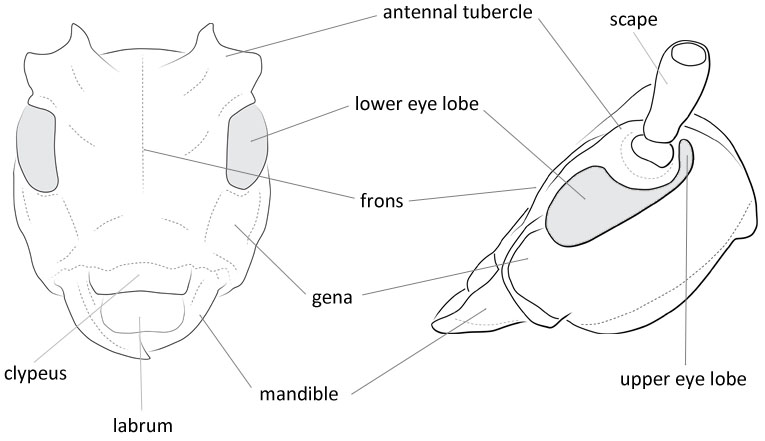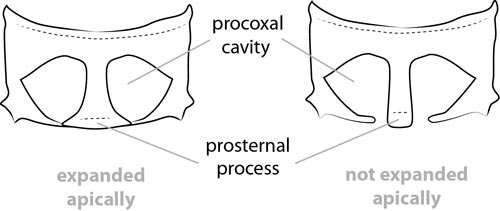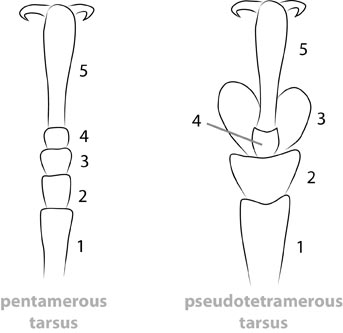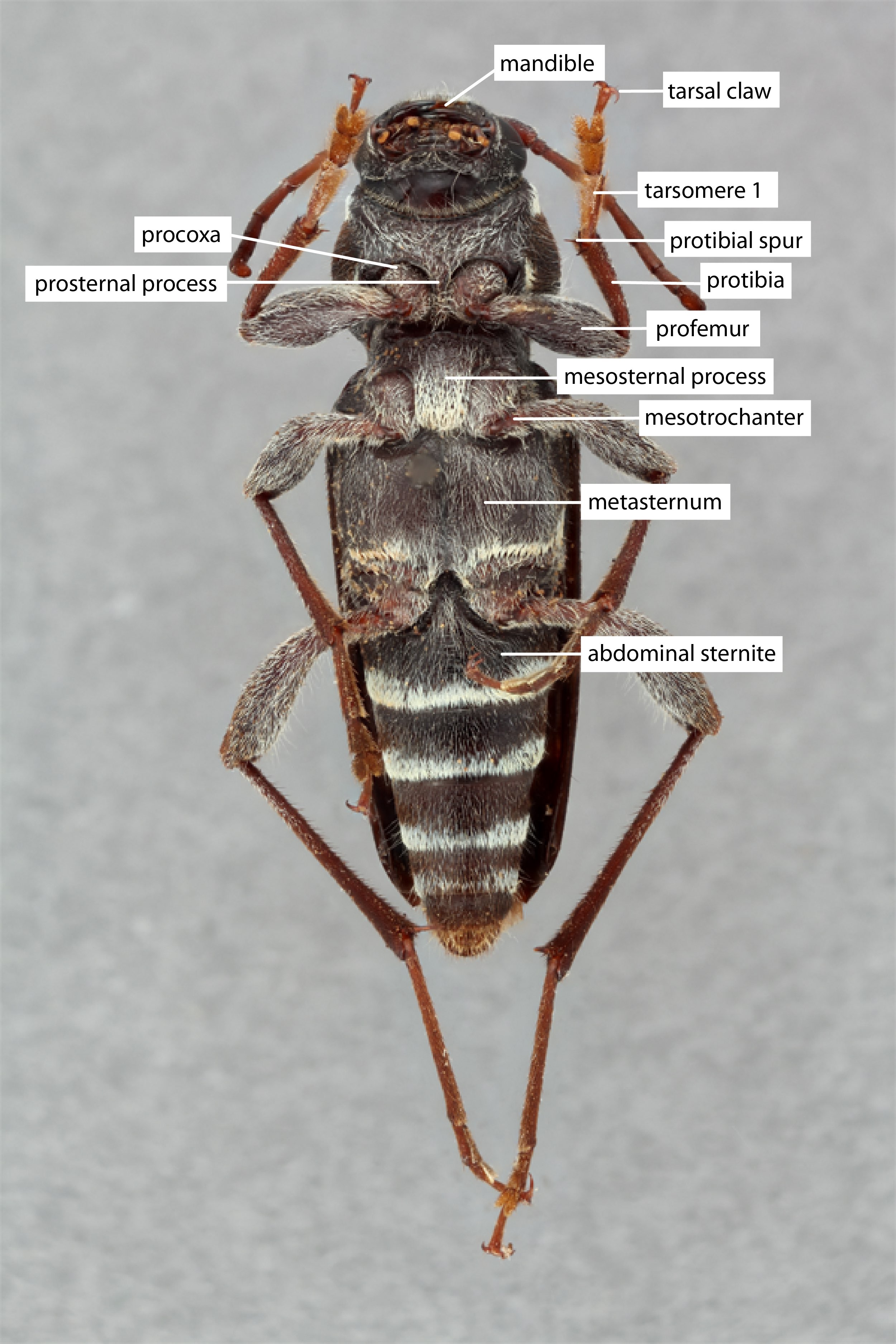Body length: 3.8–6 mm.
Eyes: eye interommatidial setaeseta:
a sclerotized hair-like projection of the cuticle
absent, eye divided—max one row of facets between, eye ommatidial density coarse or fine.
Antennaeantenna:
in larval and adult insects, paired segmented appendages, borne one on each side of the head, functioning as sense organs and bearing a large number of sensilla
: antennal length reaches between basebase:
the part of any appendage or structure that is nearest the body
and end of elytraelytron:
the leathery forewing of beetles, serving as a covering for the hind wings, commonly meeting opposite elytron in a straight line down the middle of the dorsum in repose
or reaching/surpassing end of body, antennal flagellar segments elongateelongate:
much longer than wide
, scapescape:
the first proximal segment of the antenna smooth/punctate at apexapex:
smooth/punctate at apexapex:
end of any structure distad to the base
, antennal scapescape:
the first proximal segment of the antenna ≥ segment 3.
≥ segment 3.
Pronotumpronotum:
the upper and dorsal part of the prothorax
: pronotumpronotum:
the upper and dorsal part of the prothorax
shape transversetransverse:
broader than long
, pronotumpronotum:
the upper and dorsal part of the prothorax
lateral armature absent or blunt tubercule.
Prosternum: prosternal processprosternal process:
a posterior extension of the prosternum between the coxae dilated at apexapex:
dilated at apexapex:
end of any structure distad to the base
, procoxal cavities closed posteriorly.
Elytraelytron:
the leathery forewing of beetles, serving as a covering for the hind wings, commonly meeting opposite elytron in a straight line down the middle of the dorsum in repose
: elytral length reaching or close to end of abdomen, elytral apicesapex:
end of any structure distad to the base
with tooth or spinespine:
a protuberance with an acute (sharp) distal end
, elytral color black, brown, yellow, or orange, elytral color pattern present or absent.
Legs: visible tarsomerestarsomere:
subdivision or article of the tarsus, usually numbering from two to five : 4, femora clavateclavate:
: 4, femora clavateclavate:
thickening gradually toward the tip
or robust, protibial spursprotibial spur:
sclerotized spine(s) located at the distal tibia; can be single, double, or absent : 2, tarsal clawstarsal claw:
: 2, tarsal clawstarsal claw:
usually paired claws of the pretarsus, at the distal end of the leg with tooth/bump near claw basebase:
with tooth/bump near claw basebase:
the part of any appendage or structure that is nearest the body
.
Characterized by diminutive body. Head short and broad, antennal tubercles highly displaced, eyes completely segregated into upper and lower lobes, and lacertus between them absent. Antennaeantenna:
in larval and adult insects, paired segmented appendages, borne one on each side of the head, functioning as sense organs and bearing a large number of sensilla
thick, shorter than body (Cherepanov 1991bCherepanov 1991b:
Cherepanov AI. 1991b. Cerambycidae of Northern Asia, Vol. 3. Lamiinae, Part III. Oxonian Press, New Delhi 6: i–xiii + 1–395, 158 figs.).
Tetrops species are small (<6.5mm) with no lateral pronotal tubercles, eyes completely divided with no isthmus, tarsal clawstarsal claw:
usually paired claws of the pretarsus, at the distal end of the leg appendiculate, and long setaeseta:
appendiculate, and long setaeseta:
a sclerotized hair-like projection of the cuticle
on pronotumpronotum:
the upper and dorsal part of the prothorax
and elytraelytron:
the leathery forewing of beetles, serving as a covering for the hind wings, commonly meeting opposite elytron in a straight line down the middle of the dorsum in repose
.
Palearctic, Nearctic (introduced, T. praeustus)
broadleaf trees
8 species and nine more subspecies. Subgenus Mimosophronica 5 spp. + 9 additional sspp.
Anaetia Dejean, 1835 [for Tetrops]
Polyopsia Mulsant, 1839 [for Tetrops]
Subgenus Tetrops Kirby, 1826
Subgenus Mimosophronica Breuning, 1943